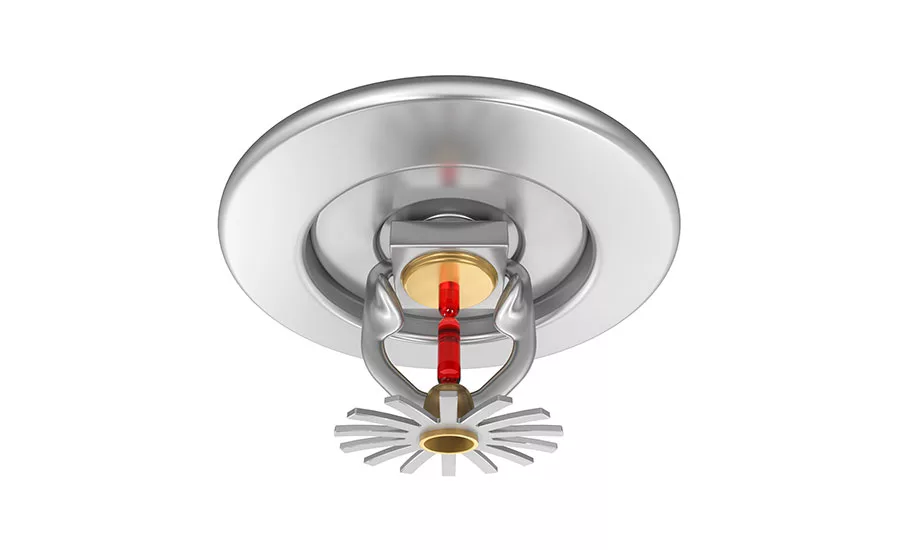Care and feeding of fire sprinkler systems
The Fire Department: Sprinkler systems need love, too

You’re on a routine service call and the homeowner asks you to check out the residence’s fire sprinkler system. Is this work a plumber or plumbing contractor should be taking on? After all, the system’s components aren’t that alien to your everyday work. Moving water through piping for various purposes comes with the territory, right?
Sprinkler systems of the fire suppression kind aren’t that common yet on the residential side, but they are finding their way into new construction as well as into remodels and home flips. They’ve been mandatory in new residential construction in California since 2012.
So, should Western plumbers and plumbing contractors add fire sprinkler systems to their product mix or should they leave this niche to fire suppression specialists? Unless you have an in-house engineering department—which some plumbing companies and firms that do radiant heating work often do—design, engineering and installation of fire sprinklers systems can be complicated. That said, focusing on the service or maintenance side might be a good fit for the plumbing sector, because these systems are relatively low maintenance.
What tests need to be performed on residential fire sprinkler systems on-site and what maintenance needs to be performed? It depends, explains Mike Henke, sprinkler product manager, Potter Signal. “In short, as there may be different requirements in different fire protection districts, the best source for the requirements for the system is the local authority having jurisdiction. It’s also a good idea to get to know the fire marshal.”
National Fire Protection Association’s NFPA 13D covers the installation of sprinkler systems in one- and two-family dwellings and manufactured homes. NFPA 13R covers low rise residential occupancies. Each has its own set of requirements. In addition, there can be state or local jurisdictional requirements.
Both NFPA standards require documentation to prove the water supply, devices and design layout meet the requirements of the standard. The system layout and hydraulic calculations shall be performed by people knowledgeable with the requirements and the installation shall be accomplished by people trained on such systems. In addition, there may be state or local licensing or training requirements.
In addition to the design and installation requirements, there are plan review requirements and acceptance tests. The acceptance tests include, but may not be limited to, hydrostatic tests of the system, pump tests if a pump is used, water flow alarm tests if a water flow alarm is used, etc. These are all explained in the relevant NFPA 13D or 13R standard. For more information, check the National Fire Protection Association website, www.nfpa.org.
For the plumber or contractor who doesn’t want to dive too deeply into fire protection services, even a little knowledge can be valuable. If nothing else, being familiar with system components and basic precautions is an added service to your regular plumbing customers, the folks who look to you as an expert on all things water-related.
Obviously, the basic components of a fire sprinkler system are the sprinklers, piping and a reliable water source. Systems also can include control valves, manifolds, backflow protections, alarms, drain and test connections, and fire hose connections.
Consumers may not know that fire sprinkler systems don’t release water throughout the entire structure when a fire is present. Each sprinkler is tied into a network of piping. Systems are engineered so there is efficient coverage of all of the space being protected. Only the sprinkler covering a specific area is triggered when the fire raises the temperature to the sprinkler head’s operating point, usually at about 165°F. When that point is reached, either a liquid-filled glass bulb will shatter or a solder link will melt to open that single sprinkler head.
Homeowners should visually inspect sprinklers for damage on a regular basis, or have inspection done by professionals, and then schedule any repair or replacement required to ensure proper function in case of fire. Also advised, doing a simple flow test at least twice a year. While this can be accomplished by the owner, it’s another service a professional can provide. Homeowners also should visually check to see if all water shutoff valves are open, and ensure that attic pipes in areas prone to freezing are insulated.
There also are some basic precautions plumbers can pass along to customers about fire sprinklers. For example, don’t paint or cover the fire sprinkler devices, as that will affect their sensitivity to heat. If you have professional painters working in areas where there are sprinklers, make sure they know to avoid getting paint or other materials on the sprinklers.
Advise homeowners to avoid hanging objects from the sprinkler or piping, even temporarily; that includes anything from plants to decorations. Don’t block sprinklers with furniture. Educate children and teenagers not to tamper with or throw objects in the vicinity of sprinkler heads, because impact can damage the units.
"This article was originally posted on ww.reevesjournal.com."
Looking for a reprint of this article?
From high-res PDFs to custom plaques, order your copy today!






